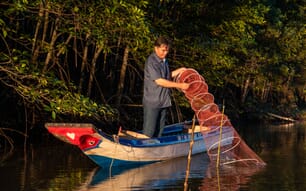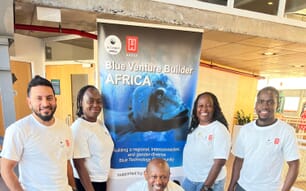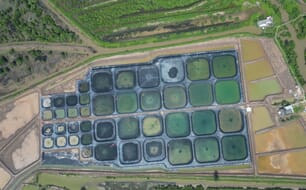The Salmon Habitat Information Program (SHIP) launched last week with an online survey to provide commercial fishermen with a way to share their local intelligence.
“We are asking people what issues they are most concerned about in their region,” said SHIP manager Lindsey Bloom.
“We also ask what sources they use to get habitat related information, such as newspapers, websites, or social media, and who they trust and are listening to for information as well.”
UFA wants to recognize and tap the wisdom and knowledge of Alaska’s 10,888 current salmon permit owners in 26 distinct fisheries to ensure that the SHIP information is useful and relevant. Bloom said the survey results also could be helpful in shaping fishery rules and regulations.
“Fishermen are some of the smartest and best equipped people to guide fish policy,” Bloom asserted.
“With the multi-generational nature of salmon fishing in Alaska, they are grounded in community and family and sustainability and stewardship. We believe that by working together, fishermen can be powerful advocates for pro-salmon policies that ensure commercial fishing jobs remain strong for generations to come.”
Respondents to the SHIP survey are entered to win a $500 Alaska Airlines certificate and a $200 gift card from LFS Marine stores. Extra entries also will be given to people who ‘like’ the SHIP Facebook page and share the survey socially.
Find the SHIP survey at the United Fishermen of Alaska website. Deadline to respond is Labor Day, September 5.
Mariculture momentum – Plans to grow more shellfish and aquatic plans are taking shape following two meetings this summer by the Alaska Mariculture Task Force. The 11-member panel, which includes reps from the Departments of Fish and Game and Commerce, Alaska Sea Grant and 7 public members, was created by order of Governor Walker in February. Its mission is to provide a statewide strategy for expanding the burgeoning industry by March 1, 2018.
“We’re focusing on both aquatic farming as private businesses and fishery enhancement programs which are more of a common property activity,” said Julie Decker, a task force member and director of the Alaska Fisheries Development Foundation. “We are looking at different models to advance, basic infrastructure and research that’s needed to really launch this industry.”
Mariculture could model Alaska’s successful salmon enhancement program, she said, where the state backed a $100 million low interest, revolving loan to jump start the fledgling industry for several years.
“It was developed as a public/private model where the state helped get the infrastructure for the salmon hatcheries started, and then it was taken over through private partnerships and regional nonprofits,” Decker explained. “And it was developed in rural Alaska where it is very difficult to make businesses work. Through taxes and cost recovery mechanisms, the industry paid the state back with interest, and every year those hatchery fish produce between $100-$300 million in value.”
“For mariculture, we have high dollar products like king crab and geoducks, abalone, sea cucumbers, seaweed, oysters and other shellfish. There is really a lot of opportunity,” she added.
While Alaska’s mariculture operations to date have focused mostly on Southeast and South Central regions, the new vision includes broadening the industry to Westward regions.
“It’s a different time in history and people are looking at ways to diversify Alaska’s economy,” Decker said. “The state has such a large seafood industry and mariculture is a natural fit. Mariculture would provide more steady supplies and keep processing companies open on shoulder seasons and provide more jobs.”
The mariculture task force wants to attract more expertise via advisory panels on investment and infrastructure, regulations, research and development, environmental impacts, public education and marketing and workforce development.
Salmon skin! A chance discovery by farmed salmon hatchery workers has spawned a line of skin care products that help cure disorders like eczema and also keeps skin younger looking.
Scientists became curious several years ago after it was noticed that hatchery workers who spent long hours handling salmon fry in cold seawater had softer, smoother hands. Researchers at Norway’s University of Science and Technology discovered the skin softening component came from the enzyme zonase, found in the hatching fluid of salmon eggs. The enzyme’s task is to digest the protein structure of the tough egg shells without harming the tiny fish.
The scientists hailed this dual ability as the secret behind the beneficial properties for human skin. Their research showed that zonase helps flake off dead skin and stimulates the growth of healthy new skin cells. It’s also proved helpful in healing wounds.
Norway-based Aqua Bio Technology, which develops marine based ingredients for the personal care industry, now markets a zonase infused product under its Aquabeautine brand.
Skin care expert to the stars, Dr. Nicholas Perricone of New York, also promotes salmon as the secret for younger-looking skin “that works from the inside out.” In his best-selling books, Perricone promises that eating wild salmon for 28 days is the cure for wrinkles and provides a “nutrition based face lift.”
Closer to home, Chevak triplets Amy, Michelle and Cika Sparck have found success with their “land and sea” ArXotica line that uses salmon and berry infused products to promote healthy skin, hair and nails.
The sisters hand gather crowberry, fireweed blossoms and Arctic sage, called “ciaggluk” which translates to “nothing bad about it.”
“Because no matter how you use it, it’s good for you,” said Michelle. “We add extra virgin, cold pressed salmon oil to our formula. The omega properties blend with the botanicals that are really high in antioxidants. It’s ingredients we have trusted for thousands of years, so we can pass on that trust to our customers.”
The ArXotica blend won first place this year in the “Beyond the Plate” category at the annual Alaska Symphony of Seafood.





